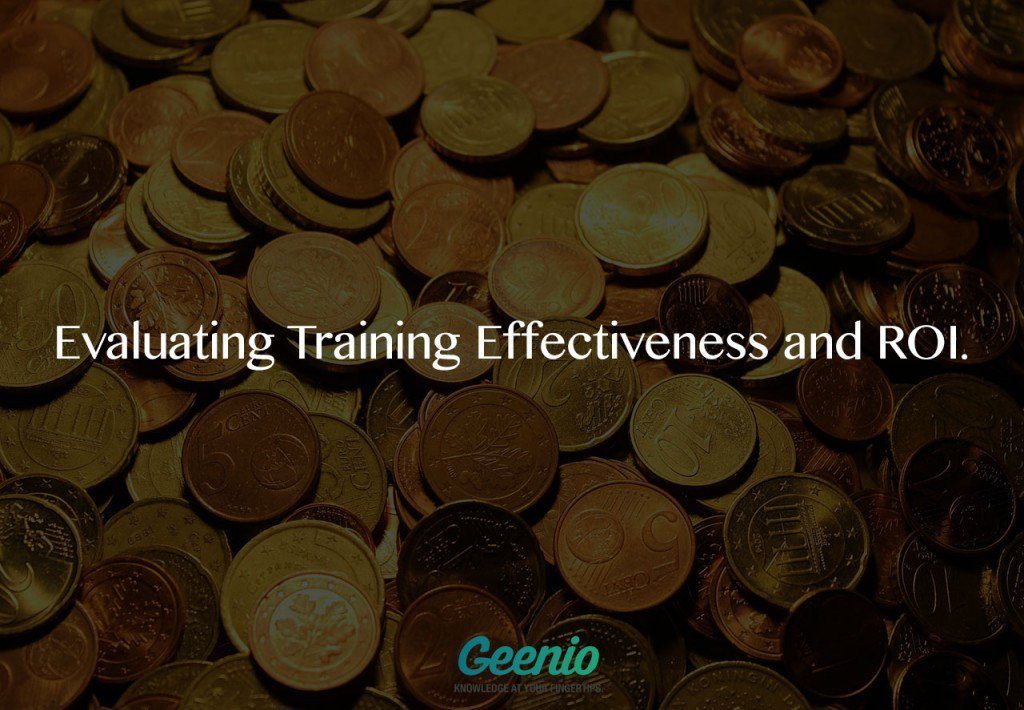Business Leaders Apply The Real ROI Evaluation
Have you ever considered the impact your training costs have on a business project or investment? No? Well, you need to change that, now!
Business leaders have many methods to evaluate the profitability, or at least the financial benefit, of major business initiatives, like purchasing equipment, or launching a new product. And, success for these major initiatives depends on the support of internal activities - like training.
Net Present Value
I recall working with a major pharmaceutical company launching a new prescription drug. The product launch required educating the medical community and Sales team in the drug’s use. Management expected 15 years of revenue growth and to incur most of the internal costs, including training, in the first 3 years, leveling off for the rest of the product life. They expected a 15% return from investing in this drug product.
This is what your leaders call 'capital budgeting'. They evaluate this decision applying a classic return on investment activity called Net Present Value, or NPV, analysis. NPV takes into account the value of the activity’s cash flows within its life based upon, or as leaders say 'discounted', an expected rate of return.
Simply, NPV is the difference between the present value for every year of cash inflows, typically the revenue or savings it generates, and the present value for every year of cash outflows, usually expenses to support the project.
When the present value of total cash inflows is greater than the present value of total cash outflows (PV Inflow>PV Outflow), NPV is positive and the investment accepted. Naturally, when the present value of total cash inflows is less than the present value of total cash outflows (PV Inflow<PV Outflow), NPV is negative and the investment is rejected.
For example, let’s say you consider purchasing an enterprise-wide LMS to help support employee skills development. The LMS costs $80,000 and you expect improving employee productivity by an annually estimated $25,000 increase in cash inflow. There's a $5000 per year maintenance expense and the LMS will last 8 years. Your leaders expect a 15% Return On any Investment.
You leaders will immediately calculate the NPV benefit for this capital investment. The question they expect you to answer is, 'should we go ahead with the purchase?'.
This is the initial and immediate cash outflow is $80,000. It’s supposed to realize a yearly cash inflow of $25,000 over 8 years, or rather, each year employee productivity will improve cash flow by $25,000. During the same periods, it’ll cost $5,000 per year to maintain the LMS. So, this results in a net annual cash inflow of $20,000 (or $25,000 productivity cash inflow less the $5000 for maintenance).
The $20,000 net cash inflow occurs in different years and has different present values (the $20,000 gained in the first year is worth more today than the $20,000 we gain in year 8). To determine each year's current net cash inflow value leaders apply a Return On Investment rate, in this example 15%, 'discounting' each year to today. This equalizes the yearly amounts.
The NPV for this example is approximately $9,750. Since the amount is positive you would recommend purchasing the LMS.
Revisiting the pharmaceutical example, leaders weren’t achieving their expected level of profitability over the drug product’s 15-year life. They conservatively forecasted revenue, so increasing sales to reach the profit target was out. Their only option was to re-evaluate and reduce internal costs.
The leaders recognized training's relevance to respecting compliance and legal requirements. They asked training leaders to identify cost reduction or reallocation opportunities without degrading the learning effort. As a result, we reduced overall training costs by 10% and, along with reductions from other internal activities, exceeded profitability expectations.
Calculating ROI
Your leaders and the finance department determine Return On Investment, not you. They measure a project’s profitability contribution applying an ROI rate. When it doesn’t meet this rate of return, they’ll seek other areas to invest that will.
For any training investment or training contribution to major projects, prepare to answer these questions:
- What is the initial cost of the investment?
- How long will the training and training asset last or be used?
- What are the expected operational costs to support the investment?
- What positive financial results or savings will it offer over its life?
Again, I don’t expect you to become a financial professional. I do, however, encourage you to work closely with your finance team to do this Return On Investment calculation.
If you want to learn more watch for my Spring 2018 Lynda.com course, "Gaining Internal Buy-in For eLearning". If you enjoyed this article, please visit my recent Lynda.com Train-the-Trainer eLearning course designed for both recent and seasoned trainers.
Prepare to know the financial requirements for your training investments or the cash outflow impact the training will have on the organization’s project. This type of business acumen, and financial awareness will impress your business leaders.









